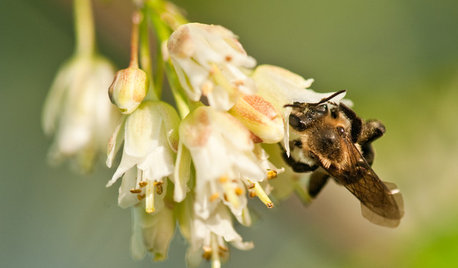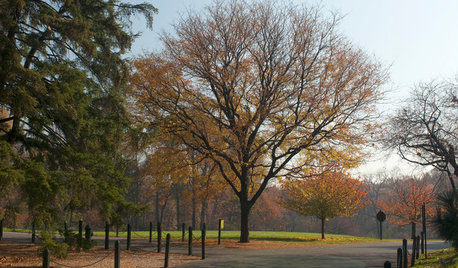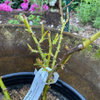What to do about Canker?
harryshoe zone6 eastern Pennsylvania
16 years ago
Featured Answer
Sort by:Oldest
Comments (36)
cincy_city_garden
16 years agolast modified: 9 years agocarla17
16 years agolast modified: 9 years agoRelated Discussions
Rose Canker? What do I do?
Comments (5)That rose lady must have been thinking all her roses get this problem and so just cut out the dead canes and the rose will grow more canes. But, when all the canes are gone, you have a problem. You should not have allowed her to prune them. You should prep the soil before you plant, not while you are waiting. Pruning seal means no new grow can come there. If the rose is already infected pruning seal won't stop the infection. Once the fungus has colonized in the wood, there is no way to get that fungus out of the wood, as far as I know. If I am wrong, someone tell me out to get that fungus out of the wooden cane....See MoreWhat dug this hole and what do I do about it? (with pics)
Comments (2)Could be a Ground Hog (Woodchuck), Ground Squirrel, maybe a Chipmunk. Down by the pond most likely is Muskrats. You could live trap, but then what to do with the animal if you do because in Michigan you need to be licensed by the state to transport wildlife anywhere. Poisons are not recommended since they can do harm to non target thingys, such as children. Flooding of the tunnels will do little because these wee buggers would not have survived longer than us if they had not figured out long ago how to route rain water so that did not flood them. Gassing is also not recommended since hooking a hose to the exhaust to any gasoline engine and sticking the other end into the hole is simply a good way to make an engine mechanic rich. I found many years ago that smoke bombs did nothing except put some of my money in someone else's pocket. Since I've not seen them in a long time they may not be on sale anymore. If these buggers are real pests that need to be removed hiring a wildlife control specialist may be the best option....See Moreits rose cane canker- now how do I prune?
Comments (2)Prune well beneath the canker and dispose of all the prunings by bagging them and throwing them away. Disinfect the pruners between plants. Cut at about a 45 degree angle and make sure your pruners are nice and sharp before you start so they'll make clean cuts. I hope the canker is not too low on the canes or you'll be cutting back the Knockout roses lower than generally is recommended. I remember when Knockouts were first introduced and were touted as being extremely disease-resistant. I have been surprised how many people have had major black spot and canker issues with them....but that is a reminder to us all that resistance is merely resistance, not immunity....See Morewhat is it and what do i do about it?
Comments (3)If they are doing no harm to the plant why would you need to do anything at all? Maybe these wee buggers are actually controlling some insect that you really do not want on your plants and knocking them off with a sharp water spray or killing them with anything may be the worst thing you could do. Of the some 8,000,000 identified insects in the world today we know that about 8,000 are, potentially, harmful while the others either help control those that might be pests or pollinate our crops, or do no harm. As always simply seeing some insect in your garden is not a reason to get any bug killer out....See Morebbinpa
16 years agolast modified: 9 years agoanntn6b
16 years agolast modified: 9 years agocincy_city_garden
16 years agolast modified: 9 years agoathenainwi
16 years agolast modified: 9 years agoceterum
16 years agolast modified: 9 years agokarenforroses
16 years agolast modified: 9 years agomehearty
16 years agolast modified: 9 years agolynnette
16 years agolast modified: 9 years agoharryshoe zone6 eastern Pennsylvania
16 years agolast modified: 9 years agoJean Marion (z6a Idaho)
16 years agolast modified: 9 years agoathenainwi
16 years agolast modified: 9 years agomosypiuk
16 years agolast modified: 9 years agocincy_city_garden
16 years agolast modified: 9 years agoramblinrosez7b
16 years agolast modified: 9 years agocanadian_rose
16 years agolast modified: 9 years agosammy zone 7 Tulsa
16 years agolast modified: 9 years agoanntn6b
16 years agolast modified: 9 years agoanntn6b
16 years agolast modified: 9 years agocincy_city_garden
16 years agolast modified: 9 years agomosypiuk
16 years agolast modified: 9 years agoanntn6b
16 years agolast modified: 9 years agoberndoodle
16 years agolast modified: 9 years agolori_elf z6b MD
16 years agolast modified: 9 years agojody
16 years agolast modified: 9 years agomosypiuk
16 years agolast modified: 9 years agomad_gallica (z5 Eastern NY)
16 years agolast modified: 9 years agojerseywendy
16 years agolast modified: 9 years agoanntn6b
16 years agolast modified: 9 years agojerseywendy
16 years agolast modified: 9 years agosammy zone 7 Tulsa
16 years agolast modified: 9 years agojim_w_ny
16 years agolast modified: 9 years agobbinpa
16 years agolast modified: 9 years agotriple_b
16 years agolast modified: 9 years ago
Related Stories

GARDENING GUIDESGreat Design Plant: Eastern Redbud
With romantic pink blooms and heart-shape leaves, this ornamental tree has been inspiring affection since the days of the founding fathers
Full Story
GARDENING GUIDESGreat Design Plant: Staphylea Trifolia Shines in the Shade
Plant American bladdernut for 3 seasons of interest: spring flowers and striped brown branches and bladder-like seedpods in fall and winter
Full Story
FRUIT TREESHow to Grow Your Own Juicy Plums
Easier than other stone fruits and with a variety of colors to choose from, plums are a versatile garden addition
Full Story
EDIBLE GARDENSGrow Plum Hybrids for Your Favorite Fruit Flavors
Plums are cozying up with apricots, peaches and even cherries — here’s how to grow these hybrids for the best aspects of each
Full Story
SIDE YARD IDEASNarrow Trees for Tight Garden Spaces
Boost interest in a side yard or another space-challenged area with the fragrance and color of these columnar trees
Full Story
MOST POPULARHow to Reface Your Old Kitchen Cabinets
Find out what’s involved in updating your cabinets by refinishing or replacing doors and drawers
Full Story
WINTER GARDENINGPruning Secrets for Exquisite Roses
Encourage gorgeous blooms year after year with this time-tested advice on how to prune your rosebush in winter for health and shape
Full Story
GARDENING GUIDESHow to Keep Your Citrus Trees Well Fed and Healthy
Ripe for some citrus fertilizer know-how? This mini guide will help your lemon, orange and grapefruit trees flourish
Full Story
GARDENING GUIDESSpring Citrus Care Reaps Months of Sweet Rewards
Learn how to tend citrus trees in spring and ways to preserve their delicious fruit
Full Story
GARDENING GUIDESGreat Design Plant: Honey Locust Tree
No, it doesn't actually produce honey. But its dappled light and tolerant nature are treats in city and country settings alike
Full Story





Jeri Geblin